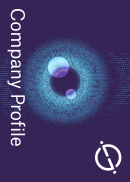As more resistant systemic fungal infection (SFI) pathogens emerge, new therapies will be based on treatments made possible through new non-microbiologic and clinical diagnostic techniques, according to a new survey.
New analysis from Frost & Sullivan estimates that the global prevalence of SFI has risen to four for every one thousand of the global population.
This is due to the widespread use of broad-spectrum antibiotics, which reduce bacterial populations competing with fungi, as well as increased numbers of people with compromised immune systems caused by AIDS, immunosuppressant drugs and chemotherapy agents.
Frost & Sullivan finds that given the relatively niche nature of SFI, it is important for key participants to differentiate their products, especially as advancements in diagnostic techniques restrict prescriptions to specific uses.
Positioning new products to address more specific indications defined by pathogen species and patient population will enable greater differentiation, thereby protecting the specific drug from generic erosion in the future.
According to the survey, although there are key therapeutics to treat the most causative pathogen (Candida albicans), there is still an unmet need to treat more resistant pathogens such as Aspergillus.
How well do you really know your competitors?
Access the most comprehensive Company Profiles on the market, powered by GlobalData. Save hours of research. Gain competitive edge.

Thank you!
Your download email will arrive shortly
Not ready to buy yet? Download a free sample
We are confident about the unique quality of our Company Profiles. However, we want you to make the most beneficial decision for your business, so we offer a free sample that you can download by submitting the below form
By GlobalDataFrost & Sullivan programme manager Carole Gaffud said that this places greater emphasis on matching antifungal choice to pathogen susceptibility, increasing the demand for rapid typing of pathogens to ensure informed, targeted drug choices.
“As a result, there would be a reduction in the use of prophylaxis in the ‘at risk’ patient group, and empiric therapy in patient groups with a persistent fever or other suggestive symptoms,” Gaffud said.






